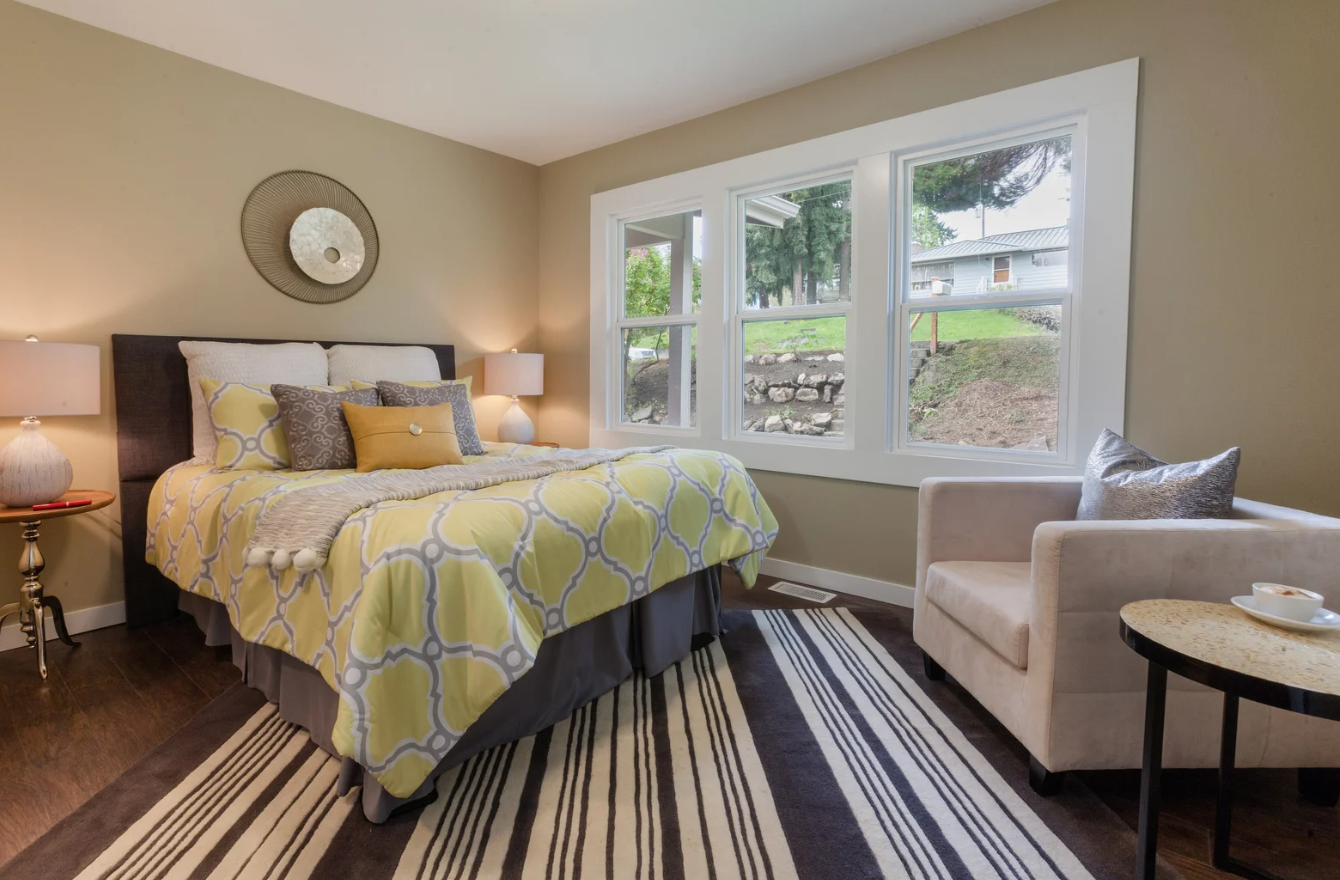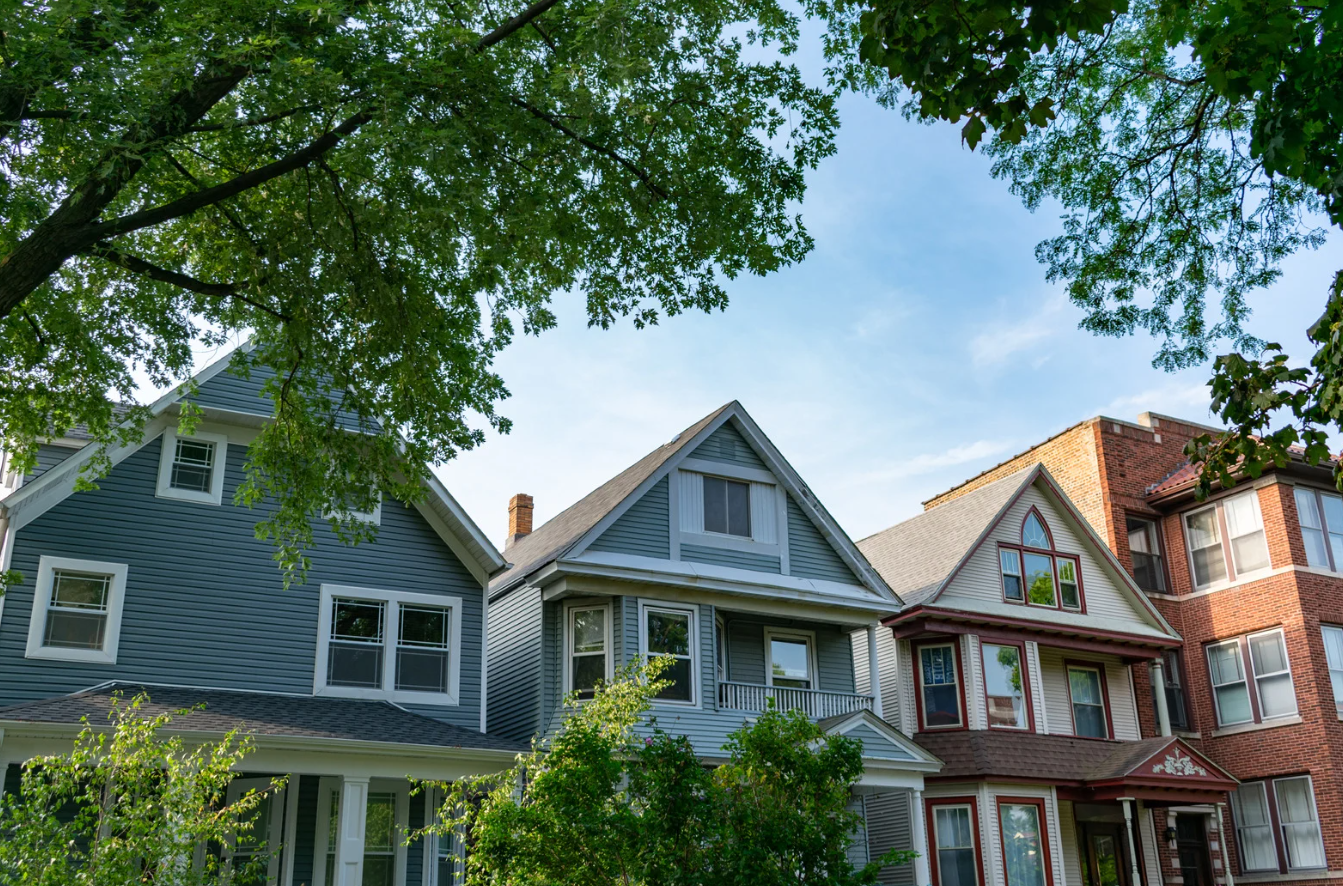Redesigning your new house’s yard is an effective way to make it feel more like your own. Use these five landscape planning tips to start your yard project on the right note.
Know the Basic Principles
Familiarize yourself with the six key principles behind every desirable landscape layout:
- Transition: Help eyeballs gradually adjust to the change of scenery when moving from your house to your yard with apt transitional elements. Otherwise, an abrupt shift between the two spaces almost always looks unpleasant.
- Proportion: Observe consistency when finalizing the size of individual landscape attractions or groups — such as structures, plants and decorations — to avoid appearing jarring next to or adjacent to one another.
- Unity: Be mindful of yard elements’ placement to achieve harmony. Landscape components — even contrasting ones — can complement each other and reinforce your outdoor space’s overarching theme.
- Focalization: Direct the viewer’s eye toward the landscape’s most prominent feature. In homes, many prefer weak curved lines to tell observers where to look without forcing them.
- Balance: Aim for symmetry to equalize your yard components’ visual weight. Ensure an equilibrium between supporting elements keeps viewers drawn to your space’s center of attraction.
- Rhythm: Select a motif to express repetition. Use various elements’ size, color, texture and shape to create a recognizable repetition to communicate your intentions.
These guiding principles aren’t unbreakable rules. Use them as you see fit, but consider them all when planning a landscape design for best results.
Develop Your Vision
Consider your needs to decide what you want your yard to look like. Browse through finished projects on the internet to get inspired and discover what’s possible. Let your imagination run wild while keeping your budget in mind.
Many new homeowners need time to recover financially to fund an expensive yard makeover. If you’re in the same boat, dream big but remodel your yard incrementally. Simple improvements are more impactful on home values than drastic ones anyway.
For instance, most people would cover an overall landscape upgrade’s cost at resale. Conversely, you could get 104%-217% of what you spent on basic tasks, including regular mowing, weed control, seasonal fertilizer application, annual mulch addition, shrub pruning and planting dozens of annuals and perennials.
Identify the Assets and Liabilities
Note the things you like and don’t like about your space at the moment. List your house exterior and yard’s most attractive features. Then, note the eyesores. Evaluate your property’s perimeter thoroughly and objectively. Your findings can help you finalize what to highlight and what to hide.
Moreover, pay attention to your yard’s topography. Determine which areas are sunny or shaded at various times of the day and which ones are uneven so you can plan your landscape design prudently. Be aware of wind patterns, too.
Where you live also affects what you can plant. Mountainous, coastal and flat landscapes present distinct environmental challenges to various shrubs, trees, flowers and crops. Native gardening is your safest bet, for plants native to your location have already adapted to your climate and need little to survive.
Recognize the Obstacles
Spot the existing yard characteristics and features that may add complexity to your project. Is your yard’s incline less than 3%, which may cause drainage problems? Is there a dead tree where you want your focal point to be? Are there snakes hiding in dense vegetation to ambush prey and stay out of sight of predators?
Such concerns can inflate your budget and prolong the job. Learning about every obstacle early in your project is vital to avoid unpleasant surprises midway.
Draw a Base Map
Create a blueprint for your finished yard based on actual measurements. Put the basic dimensions on graph paper or an online design tool and plot the fixed features’ position. Include a compass in one corner to remember sunlight and shadow patterns.
Afterward, add the other elements and draw as many sketches as you please to play around with various design concepts. Label them accordingly to depict line, color, form, texture and scale.
Design Your Landscape With Home Value in Mind
While landscaping increases curb appeal, it also improves how much you enjoy spending time in your own home. Use these steps to create the backyard of your dreams with a solid landscaping plan.





